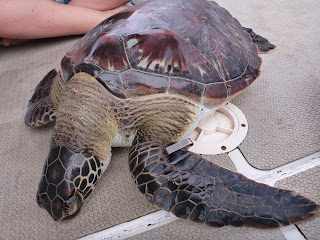its time to make more direct action, to push the limits and widen the boundaries that specify conservation and protection issues of the oceans and lands.
Small countries such as Tonga can not sit by and wait for other nations to start or even to decide what the levels of commitment should be. Here we help run a small NGO called
VEPA, one of our commitments is to the communities to support and raise awareness that they can make the difference cheaply, easily through each other and simple conservation. It only takes one person to create a ripple and we can make a wave of change.
This though takes a lot of hard work from all of us that volunteer, however the sad thing is that if people had more pride, more confidence then they would not wait until it became a dire mess to clean up and conserve. Polynesians for years were known for their sustainability, but through generations and a loss of Polynesian identity; care for the land and the ocean has been hidden and lost by a lack of ownership.
How do we get this back? Action can always bring about change, decision making can then meet the action from the top. Though easier and less work to sit by and wait for others, the benefits and personal rewards are so much greater when you make a change yourself. Getting the communities here to not only to rediscover nature for ecological value but also as a future for food, families, protection and economy is one of the only ways to move forward.
Aid money is heavily relied upon in Tonga, but there are opportunities that exist if there was a small amount of financial backing from communities. We have to get the ball rolling.
TOP1.00 per adult here per month would create almost 10 times the amount that Ministry of Health has set aside in their budget for waste management in Vava'u.
The current census of
2011 shows that there are 14,936 people in Vava'u. Taking an approximate number of adults would be 9,000, again these figures would need to be verified through the census. This would give TOP9,000 per month for a waste collection service, it would create employment, health benefits and more sustainable tourism opportunities. So can we get this started, lets hope so. Recent studies have shown certain villages have talked about paying TOP3 per week for rubbish collection, so TOP1 per month would be better for families that do not have regular income.
The cost to hire a truck per week and a driver could also be done on a district basis so each district can offer a part time opportunity within the village as done in Toula. Here bins and emptying are paid for by the Palangi and some Tongan houses in the community. It is also much cheaper to act as a community than to deal with waste individually.
However there is now a move to tax tourists, this can be done but what are the locals doing to improve, are they again just going to wait for someone else, and lose more of their pride! If the communities are seen putting something in, then the tourists will be more than happy to help, however they will be pushed away if they are paying for something when nothing is being done from within.
I for one have no problem in aiding with environmental issues and conservation areas and do so frequently with my time, experience and available money. However I do expect to see commitment from the communities, if they are not committed financially and with time, then there will be no difference made. The money will get spent on other areas which have nothing to do with improving and conserving the natural environment.
There are so many wider issues that need to be addressed here in Tonga and yet still there is no waste management that has been consistent. This is needing to be finalised and each village working on their own management systems, to reduce the waste amounts and especially to stop the illegal dumping in the bushes. So, fingers crossed with the right attitude our project and proposal will come together and we can focus on other pressing environmental issues.





















































